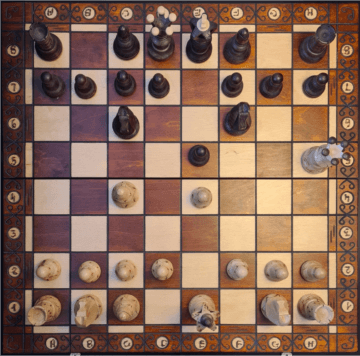by Jochen Szangolies

When asked about the foundational technologies of human civilization, most people will probably point to the wheel, or fire, or maybe the lever. Perhaps the atlatl as arguably humanity’s first machine might make the cut. Few, I think, would point to the humble fence: rather than being a construct, fences often seem to us merely a recognition of divides already present, and thus, hardly a separate technology on their own. The land is divided according to ownership, and the fences erected upon it merely mark this preexisting reality.
In truth, fences, both physical and metaphorical, fulfill an important role in the transition from a natural, unmodified, technology-free world to a reality structured according to human design. Their prevalence in metaphor is evidence of this: you can sit on them, tear them down, they are in our heads, the grass is greener on their far side, good ones allegedly make good neighbors, you can mend them, or swing for them in an attempt to achieve your most far-out performance.
The primary role of the fence is that of demarcation. Put on an originally pristine plain, it divides it into a ‘here’ and a ‘there’. Interpreting each side in terms of possession, it distinguishes between ‘mine’ and ‘theirs’; in terms of identity, it separates ‘us’ from ‘them’. It takes a continuum of possibilities and replaces it with a sharp distinction. As such, it is the original digital technology.
(Parenthetically, fences are also the original capitalist technology: not just in defining the notion of ownership, but through the concept of enclosure, the appropriation of common land that was worked by all, to be rented back to its original cultivators.)
Fences are the ultimate expression of the human tendency to categorize, to parcel off, to structure. They are a quintessentially lobsterian creation: as its hard carapace rigidly shields its vulnerable interior from a dangerous environment, so does the fence protect the shepherd’s flock from the roaming wolf. As the lobster’s analytic claw dissects whatever catches its attention, so do fences slice the land into discrete plots.
There is no question of the usefulness of fences. But the impulse to dissect, to rein in, and to replace vague continua with clear boundaries can all too easily result in a misplaced concreteness where real ambiguity exists, and in hard dichotomies where the reality is one of continuity across perceived differences. Read more »

